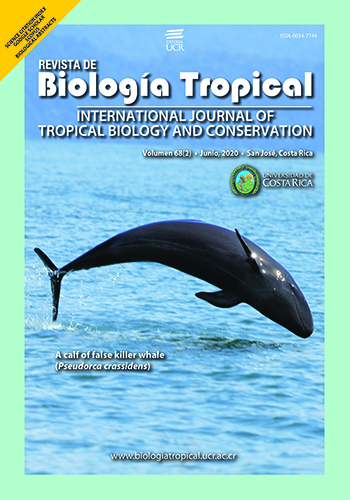Abstract
Introduction: Seasonally dry tropical forests (SDTF) are one of the most threatened terrestrial ecosystems on the planet as a consequence of global change. They harbor high biodiversity and provide a wide range of ecosystem services; therefore, their conservation is a priority worldwide. Climate warming, as well as land use patterns, are leading to species distribution range shifts. Objective: The objective of this work was to study the current and future potential distribution of a SDTF representative tree species (Anadenanthera colubrina) in the Argentinian Sub Andean Piedmont nucleus and to assess the effects of land use and climate changes. Methods: Current and future potential distribution was modeled with Maxent, using 49 presence points and 20 variables. Climate change effects were estimated in four different temperature and carbon dioxide concentration scenarios. Land use changes were determined subtracting the deforested area until 2017 to the current and future potential distribution of the species. Results: A. colubrina current distribution represents 18 % of Northwestern Argentina. Land use changes decreased almost 25 % of it and climate change will probably cause a retraction in the East and a slight expansion towards the West and South of the current distribution. The synergistic effect of land use and climate change projected to the worst scenario would reduce 63 % of its current distribution. Conclusions: Our data demonstrate the central role of distribution range studies to assess the effects of anthropic activities. Climate change and land use change would have a negative and synergistic effect on the distribution of A. colubrina. Although a possible expansion of the Sub Andean Piedmont nucleus of SDTF would occur, this expansion may be limited by the Sub Andean mountain range that could act as an orographic barrier.
##plugins.facebook.comentarios##

This work is licensed under a Creative Commons Attribution 4.0 International License.
Copyright (c) 2020 Eugenia Mabel Giamminola


